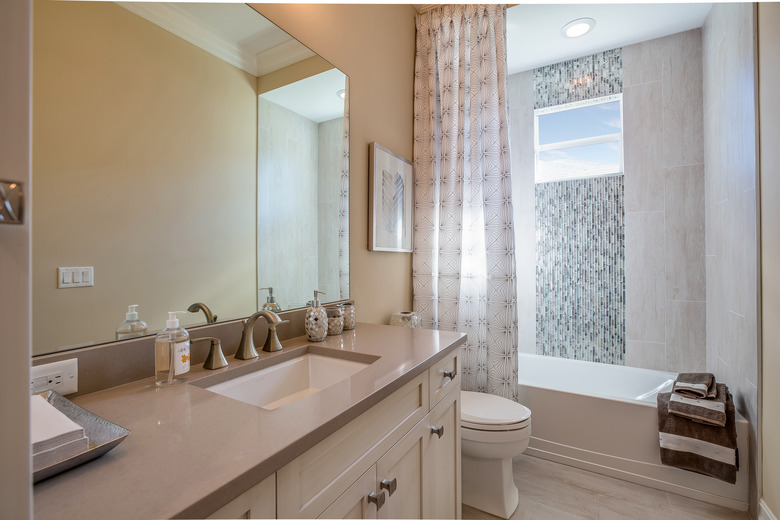How To Cut A Tub Surround
We may receive a commission on purchases made from links.
Cutting a tub or shower surround can be an intimidating project, because you just get the one shot to get the install right. But with patience and precision, plus the right tools, you can do this — and you likely will have to for many projects. Such customizing is often required, if not for a window or a bulkhead, perhaps for the fixtures.
Tip
Like most things in life, success in cutting a tub surround will come down to measuring accurately and using the right tools for the job.
What You’ll Need
What You'll Need
Things that you'll need along the way include a pencil for marking your cuts, measuring tape, a straightedge for drawing any necessary lines, a jigsaw, a hole saw, possibly strong scissors or a utility knife and some sanding paper.
And you'll also need the secret weapon: masking tape. According to Home Depot, it gets you better cuts with a more definitive line. The masking tape just helps the saw to run and cut more smoothly throughout the process. Look for a painter's masking tape or a contractor's grade version.
Make sure your jigsaw blades are suited for cutting fiberglass or acrylic, which generally means a blade capable of cutting something like aluminum — fine teeth and a high number of teeth are helpful. Of course, you'll need standard safety gear, like glasses.
Getting Started: Panel Trimming
Getting Started: Panel Trimming
If you're just trimming the panels, it's pretty straightforward. Start with measuring and dry-fitting the panels, if you can. Once you know what cuts will need to be made, apply masking tape lengthwise along where you'll be cutting. Use your pencil and straight edge to mark it for the cut and get ready with your jigsaw.
As with any sawing job, you'll want to use good, firm pressure, but don't force the jigsaw. Let it guide you. And don't panic about getting a perfectly straight line. Innovate Building Solutions encourages do-it-yourselfers to use corner trim moldings to get that "pro" finishing on the job.
But once you're done cutting, you can use scissors or a utility knife to trim corners, if necessary, then use sanding paper to smooth off the edges.
Cutting a Window
Cutting a Window
A window increases the difficulty level with your shower, not necessarily from the cutting point of view, but from the waterproofing angle. If you're confident about proceeding, you'll need to cut the hole out. Measure carefully, because the surround needs to fit snugly.
Outline the area to be cut with some masking paper and draw your lines. Use a drill to poke a starting hole or two somewhere along one side of the window. Once the jigsaw can be inserted, cut the line as precisely as you can. Be careful of corners and try to cut just until the lines intersect. Overcutting can mean the surround may crack or chip. Repeat for each side of the window cuts, and then gently pop the "window" out. Sand the edges to make it smooth, as required.
Cutting for Fixtures
Cutting for Fixtures
You'll need a hole saw sized to your fixtures for this step. Again, it's pretty straightforward — start with measuring where the holes need to go. Apply some masking tape and then draw your cut locations on top.
The trick this time is in cutting from the backside out on the panel, as this will give a cleaner cut. The hole saw should be rocked back and forth while cutting so it goes through smoothly. Be careful that the hole is only large enough to accommodate the fixtures and not so large that the trim plates won't cover the cuts.
